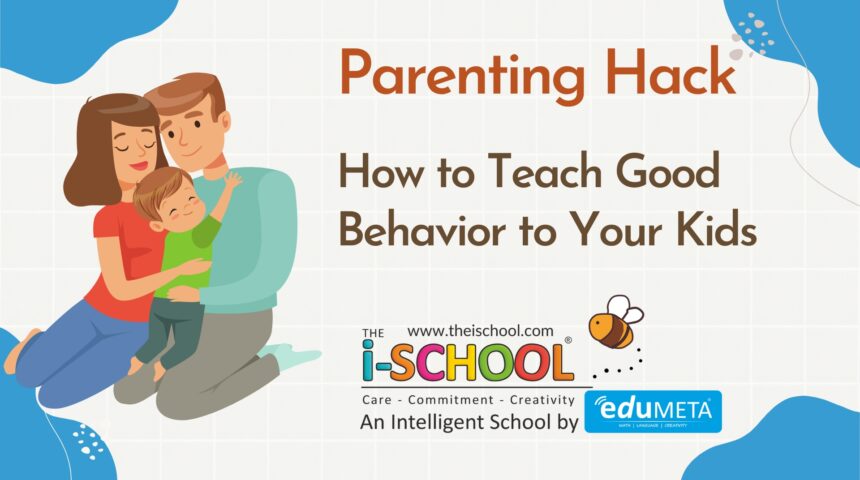Parenting Hack: How to Teach Good Behavior to Your Kids

Teaching good behavior to kids is a cornerstone of effective parenting. It helps children develop into respectful, responsible, and kind individuals. However, instilling good behavior can be challenging. Here are some practical parenting hacks to help you teach good behavior to your kids:
1. Lead by Example
Children learn by observing their parents. Demonstrate the behavior you want to see in your kids. Show respect, kindness, and patience in your daily interactions. When children see you acting responsibly and courteously, they are more likely to emulate those behaviors.
2. Set Clear Expectations
Establish clear and consistent rules for behavior. Explain the importance of these rules and the consequences of not following them. Make sure your children understand what is expected of them in different situations, whether at home, school, or in public.
3. Use Positive Reinforcement
Reward good behavior with praise and positive reinforcement. Acknowledge and appreciate when your child follows rules, shows kindness, or demonstrates responsibility. Positive reinforcement can include verbal praise, a hug, a small treat, or a sticker chart to track good behavior.
4. Be Consistent with Discipline
Consistency is key in teaching good behavior. Apply rules and consequences uniformly to avoid confusion. If a rule is broken, follow through with the agreed-upon consequence. Consistency helps children understand boundaries and the importance of adhering to them.
5. Teach Empathy
Help your children understand the feelings and perspectives of others. Discuss how their actions affect other people and why it’s important to consider others’ feelings. Role-playing different scenarios can be a great way to practice empathy and develop social awareness.
6. Encourage Communication
Encourage open and honest communication with your children. Listen to their concerns and feelings without judgment. When children feel heard and understood, they are more likely to express themselves positively and cooperate with behavioral expectations.
7. Create a Routine
Establishing a daily routine can provide structure and stability for children. A consistent schedule helps them know what to expect and reduces anxiety. Include regular times for meals, homework, play, and bedtime to promote good behavior and responsibility.
8. Teach Problem-Solving Skills
Equip your children with problem-solving skills to handle conflicts and challenges. Encourage them to think of solutions and discuss the pros and cons of different approaches. Teaching problem-solving fosters independence and responsible decision-making.
9. Model Gratitude and Kindness
Incorporate gratitude and kindness into your daily life. Encourage your children to express gratitude and perform acts of kindness regularly. Simple gestures like saying “thank you” and helping others can reinforce positive behavior and a sense of community.
10. Be Patient and Understanding
Teaching good behavior is a gradual process that requires patience. Children will make mistakes as they learn and grow. Offer guidance and support, and remember that positive change takes time. Stay calm and patient, reinforcing the desired behaviors consistently.
Conclusion
Teaching good behavior to your kids is a rewarding but ongoing process that involves patience, consistency, and positive reinforcement. By leading by example, setting clear expectations, and fostering open communication, you can guide your children toward becoming well-behaved and compassionate individuals. At eduMETA THE i-SCHOOL, we believe in nurturing good behavior through a supportive and structured environment. Implement these parenting hacks to create a positive and respectful atmosphere for your children, ensuring they develop into responsible and kind members of society.
